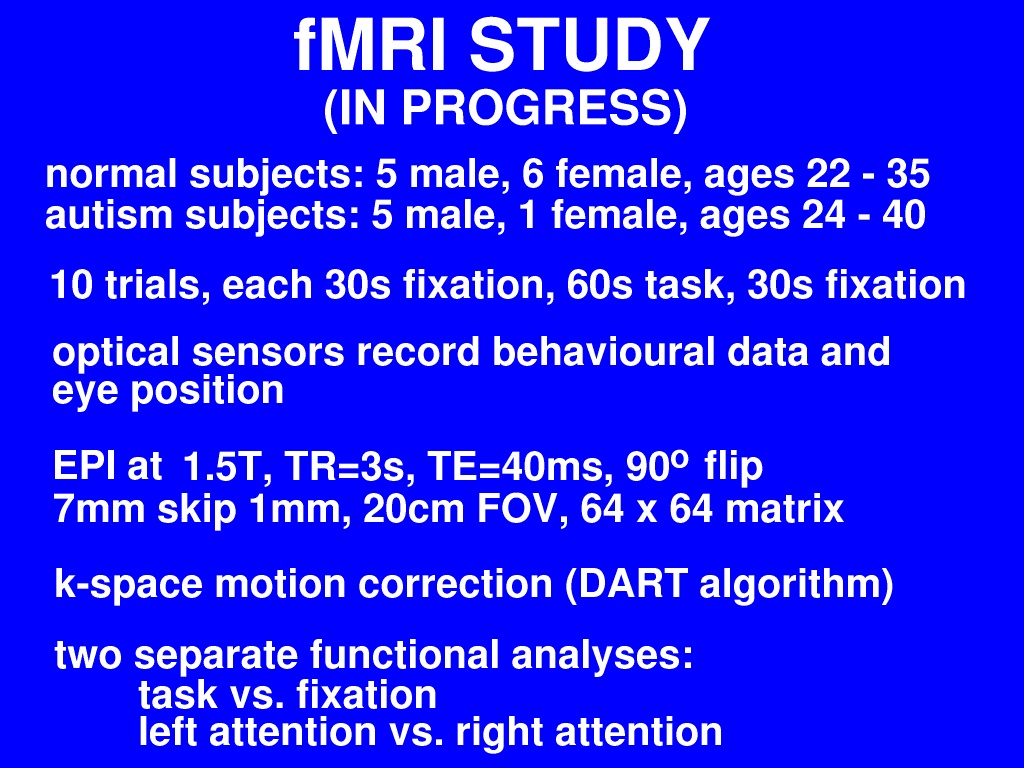

We've scanned eleven normal adults, and six autistic adults referred from local clinics. Obviously there is a sex bias present in our autism sample that isn't present in our normal group, but it turns out that the sex-associated trend that we see in the normals would if anything bias our comparison in the opposite direction of what we've found; I can say more about that at the end if I have time.
Given the relative slowness of the haemodynamic effect that we're observing in fMRI, we spaced out the targets so that there were only a few within each 60-second block. We ran ten of these blocks, with rest breaks in between, and used an optical switch to record behavioural responses and an infrared eye tracking system to monitor fixation.
We collected echo-planar images at 1.5 Tesla, TR 3 seconds, TE 40ms, in 7mm slices. We applied automated rotational and translational motion correction in k-space using the DART algorithm, and then we applied two separate functional analyses: first, task versus fixation, and then within the task blocks, attend-left versus attend-right.
![[previous]](../left_arrow.gif) |
![[contents]](../up_arrow.gif) |
![[next]](../right_arrow.gif) |